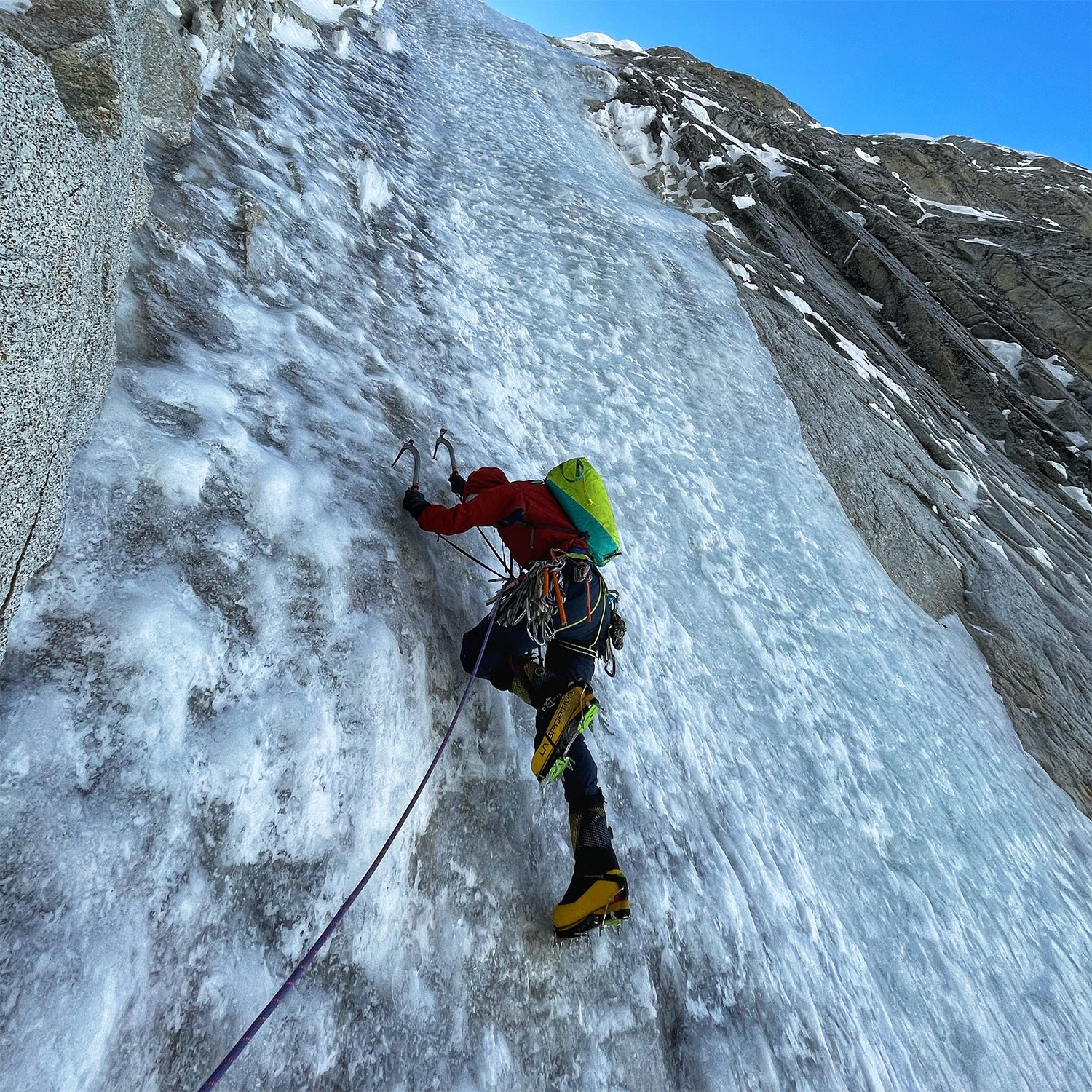At any given wintry crag in the Pacific Northwest, you’re likely to spot a number of sworn gear favorites from big brands. But there’s one particular item that’ll stand out against the snow and granite—and it’s bright blue. Climbers call them “smurf gloves.” In fact, they’re polyurethane coated fishing gloves made by a Japanese company called Showa, and they’re one of the most unexpectedly ubiquitous pieces of gear in ice climbing.
Ice climbing is still a nascent sport. It’s only in the last few decades that brands have started to produce high-end, sport-specific gear for climbing frozen escarpments. So to fill that gap, devotees have long improvised equipment and borrowed ideas. The particular tale of the Showa fishing gloves starts at in Salmon Bay, Washington, which happens to be located right next to Vertical World, the oldest climbing gym in the U.S.
Read more: The Best Ice Climbing Gear of 2023
Enter: Dan Aylward. Aylward is a Seattle-based alpinist with a long resume of mountain accomplishments and brainy inventions. (Most notably, he once showed up to Patagonia wearing vibram-resoled ultralight track shoes for approaches.) For years, Aylward had made it a habit to stop by the Marine Supply Co. when leaving Vertical World, just to see what might catch his Macgyver-eye. One of ice climbers’ main problems is contending with precipitation and moisture, and if there’s anyone who knows about staying dry, it’s the fishermen of Seattle.
Around 2011, Aylward noticed the Vinylove, a waterproof fishing glove made by . They were constructed out of PVC-coated fabric, with a thin, furry lining. Translation: cheap, dextrous, mildly insulated, and totally protective against external moisture. Unfortunately the PVC coating was not terribly durable nor breathable, and therefore impractical for mountain sports. But Dan kept his eye out, and a few years later, the smurf blue Temres showed up on the shelves. This model was made of polyurethane coated material, and thus breathable. Cautiously optimistic that they might be too good to be true, Aylward put the new Temres to the test. During an attempt at Patagonia’s Cerro Standhardt via Exocet with Steve Swenson in 2014 his hands were dry, and after 15 or 16 consecutive rappels, there was no visible wear.
The Temres quickly caught on in Aylward’s climbing circles—including with an up-and-coming alpinist named Colin Haley. Haley is known for trying anything that might give him an edge, no matter how outrageous or dorky it looks. He quickly recognized the simplistic beauty of the Temres, and began evangelizing them publicly and online. (By this time, Japanese climbers had also discovered the Temres on their own.) Over the following years climbers continued to modify the Showa gloves to fit their needs, like adding gauntlets and cinchable cuffs to keep the snow out.
Showa eventually caught wind of their unexpected new market, and even more they integrated that market’s feedback. The brand released the , which now features a synchable cuff. While some lament the move from bright blue to a subtler black, this simple product born from the industry that brings us yellowtail from ocean-to-plate has become an alpinist favorite without rival. Despite their fancy textiles, technology, and high price tags, the Temres’ rivals are long-soaked through and threadbare while the 282 continues to get the job done.


